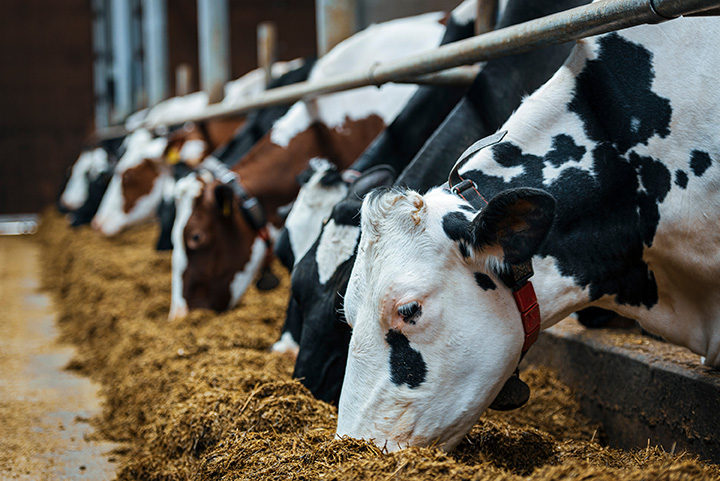A preventative approach, by monitoring the risk factors.
Risk factors – It isn’t science, but common sense
Do you know when a disease occurs? Generally, I think, everybody is able to describe when a certain disease is likely to strike: You’ve been in the cold too long, not wearing a proper hat – then you’ll be likely to get pneumonia. Eating out in dubious places – a proper gastrointestinal infection is a possibility. Overweight, no exercise: You are a candidate for conditions like diabetes, stroke or coronary disease. There is a general knowledge about something that is often referred to as “risk factor”. A risk factor describes something that makes a danger more or less likely or makes the impact of an occurrence smaller or bigger. No exercise at all is a risk factor for some metabolic, cardiac or circulatory problems. However, with a healthy diet you may in turn decrease the risk. The same can be said to wearing proper clothing when outside in winter, this decreases your risk of catching a cold or nastier things.
The questions you should ask: Do you know when a disease occurs? Can you predict the month or even the day when it is likely to strike? Whether you will have a certain disease at all? To make things worse, can you really say whether you already had a disease and if so, when? A lot of diseases luckily pass by unnoticed and some diseases are there for years without being noticed. This may apply to the individual, but also a group of humans. Everyone knows that feeling when it is still unclear if we are getting sick or just feeling unwell. At times, it may take quite some time before a new disease is recognized as being one. Until this point, only some signs have been noticed, but not understood. So, I guess, the answer is: No, we don’t know when a disease will occur and way too often we can’t even say if it is present at a given time.

They’re just like humans: Disease from the animal’s point of view
I have talked about humans here, but the same applies to animals. Also in animals, there are risk factors, there is uncertainty whether an animal is healthy or not and only too often diseases are overlooked and go unnoticed. One could say that humans are not very good at detecting disease, it may be in humans themselves or in the animals they keep and they are not even aware that disease is present. Let us take a closer look at a type of animal that is kept almost everywhere, which is important for human nutrition, is well-researched and usually looked after very well, because it is valuable: Let’s talk about dairy cows!
There are numerous diseases threatening a healthy cow. Some disease can kill her, some affect her well-being or at least make her unproductive. Thinking of infectious diseases; they tend to be controlled well on dairy farms in most parts of the world, but nevertheless pose a risk. There are however other types of diseases present on any dairy fam. Farmers know about them, farmers have learned how to deal with them, and good herd management practises try to prevent them. However, they often go unnoticed. These diseases are called metabolic diseases. The examples every farmer knows are milk-fever (hypocalcaemia) and ketosis. These two diseases are common (How common? – we’ll discuss later), they are not too difficult to prevent, and they may lead to a lot of secondary disease which are also commonly heard of – Left abomasal displacement (LDA) and retained fetal membranes (RFM). The latter two conditions couldn’t be more different; while RFM is little more than a nuisance which, if properly managed, won’t cause much damage, an LDA requires surgical intervention and may very well kill an animal. All the diseases I mentioned are often referred to as “transition cow diseases”, meaning they occur around the calving of a cow, usually some hours or days after calving. This description points to the first risk factor they all have in common: The calving!
Transition cow diseases – A natural disaster?
The calving of a cow is a natural event, and it has gone well for hundreds of thousands of years. The concept works, but it involves dangers as well. We need to understand that calving changes the metabolism of a cow completely: demands of energy and minerals skyrocket, at the same time the cow tends to eat less than she usually does. Milk production needs energy and calcium, while her energy-intake drops significantly. We are now describing this process as “Negative Energy Balance”. It’s a natural concept that mostly works well, but sometimes it just doesn’t: transition cow diseases are the consequence. The signs of ketosis are however often overlooked; even worse: When the ketosis symptoms are recognized, the damage has already happened.
Remember my first question? “When does a disease occur” – We do know the risk factors for a cow getting into trouble around calving – a cow that is too fat is one major risk factor. This is usually associated with poor fertility, a late pregnancy results in a longer period and the cow eats more. If the cow had problems before, she is likely to get them again. Another risk factor is a high milk production, especially if the herd management of the farm not at its best.

It's Science, not Fiction: Let Artificial Intelligence do the work!
Dairy farmers want a healthy cow and they’ll do anything to prevent her from getting sick; the whole herd management is built around this. But do we know when a disease occurs? Well, if the signs of ketosis or another transition cow disease are there, it is often recognized. But way too often they go unnoticed or are not being documented. It’s surprising, but all we have are estimates, projections, approximations. Moreover, when a transition cow disease is noted it is too late anyway. Treatment is possible and often successful, but sometimes it isn’t, and damage has already been done to the cow. This damage costs productivity and endangers the cow’s life. In conclusion, it is better to monitor the risk factors and prevent disease from happening.
We can know when a disease is likely to occur in a cow. Farmers usually know which cows need to be looked after with special care and they just do that. But wouldn’t it be preferable to have a system doing this for you? Science has done a good job in describing all the risk factors and data scientists have done a good job in compiling these factors into data. It is thus possible to recognize those cows deserving special attention beforehand. It is however demanding and complicated to monitor every detail. Artificial Intelligence (AI) can help us here by providing the tools to monitor the risks. The tool is called “prediction” – and it can help us to identify the cows that need help and help them before they are in trouble! And that’s the whole point: The Healthy Cow is what we want and every dairy farm can work for that – By means of Artificial Intelligence!
Learn more about how Predicta GUARDIAN can help your identify cows at risk of developing transition cow disease using artificial intelligence.
This blog was written by Dr. Joachim Lubbo Kleen. Owner of Cow Consult.

